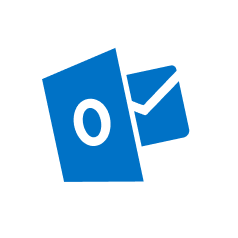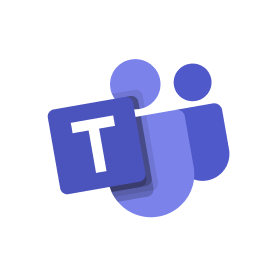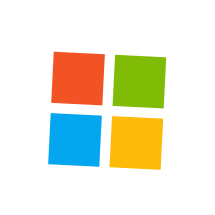Tracking sick leave: How to keep an eye on illness-related absences
Many record sick leave via email, phone, or with Excel. This works until it becomes cluttered. When information is missing or gets lost, not only does planning suffer. Legally, it can also become problematic.
Anyone who wants to track sick leave needs a system that documents reliably and provides information immediately. Ideally automated, compliant with data protection and transparent for all parties involved.

Content Manager at absentify
Contents
Tracking sick leave: The essentials in brief
Why you need to track sick leave and what goes wrong without a system
Documenting sick leave in compliance with GDPR – what is permitted and what is not?
Tracking sick leave with Excel, HR software, or specialized tools
This is how you track sick leave notifications in a legally compliant and clear manner
Manage sick leave automatically - without stress and follow-up questions
Tracking sick leave – Frequently Asked Questions and Answers
Tracking sick leave: The essentials in brief
- Sick leave must be documented in compliance with legal and GDPR requirements, otherwise legal and organizational problems may arise.
- Excel quickly reaches its limits as the number of employees increases, due to the lack of automation and access control.
- Uniform processes with clear task allocation reduce errors, ensure clarity, and save time in administration.
- Absentify simplifies the handling of sick notes and enables evaluations, reminders, and secure archiving.
Why you need to track sick leave and what goes wrong without a system
Those who do not document illness-related absences in a structured way risk faulty processes, unclear responsibilities, and data protection issues. In many companies, there is no uniform method for recording. Sick notes arrive by email, end up somewhere in the inbox, and are then hard to find.
What often goes wrong in practice
- Although the sick leave is announced, it is not properly recorded.
- A certificate of incapacity for work is missing or arrives late.
- Supervisors are unaware of who is present and holiday cover is not planned accordingly.
- Employees appear on the schedule even though they have called in sick.
These situations lead to unnecessary effort in HR and team management, create confusion among colleagues and make personnel planning prone to errors.
Where it becomes problematic
Wenn du Krankmeldungen nicht verlässlich dokumentierst, entstehen zum einen organisatorische Probleme. Zum anderen geraten rechtliche Themen wie Lohnfortzahlung, Nachweispflichten gegenüber dem Finanzamt oder Aufbewahrungsfristen nach DSGVO in den Fokus.
If a failure is not properly recorded, for example, it may happen that too much salary is continued to be paid or a deadline for sickness benefit payment is missed.
Overview is the basis for planning
Anyone who documents sick leave also creates an overview of:
- the availability in the team
- recurring failures or noticeable patterns
- open sick leave certificates
By keeping a clear track of employee sick leave, it is possible to understand periods of illness, plan cover more effectively, and avoid follow-up questions. Without a lengthy search.
Documenting sick leave in compliance with GDPR – what is permitted and what is not?
Anyone who documents sick leave is processing sensitive health data. This falls under Article 9 of the GDPR and requires clear rules.
It's not enough to just jot down the information somewhere. Those who want to be on the safe side need traceable processes, a legitimate interest, and technically clean implementations.
You are allowed to record this information for sick leave notifications
Not permissible: Diagnoses, medical details, or information about the nature of the illness.
Important: Even if employees voluntarily share more, only the bare minimum may be documented.
Observe retention periods
The documentation of sick leave is not subject to any fixed statutory retention period. In practice, the following recommended retention periods for sick notes apply:
- 3 years: Generally sufficient for the proof of continued remuneration.
- 4 Years: Claims for reimbursement against health insurance companies can be made up to four years after the end of the calendar year.
- 6 years: When sick leave becomes relevant for tax purposes (e.g., in payroll accounting or audits).
However, according to the GDPR, data may only be stored for as long as it is necessary for the respective purpose. Once there is no longer a legal or organizational reason, they must be deleted or anonymized.
Who is allowed to see the sick leave information?
Not every executive should have access to all information. A clearly regulated access protects both the privacy of employees and the company from violations.
Recommended access control:
- HR sees all details regarding the management of incapacity for work, including incapacity status and documents.
- Team leaders see periods of absence and the status of sick leave, but no medical details.
- Colleagues can see if someone is ill and for how long they are expected to be, but not why.
An appropriate tool automatically sets such access permissions. This keeps the administration legally compliant and without additional effort.
Tracking sick leave with Excel, HR software, or specialized tools
Many companies start with Excel. And they often stick with it longer than is advisable. While it's quick to set up a spreadsheet, the maintenance effort increases with each additional employee. Mistakes creep in, the overview is lost, and when someone is on vacation or covering for another, important information is missing.
Managing sick leave in Excel – is that sufficient?
An Excel template for recording sick leave can be an interim solution for small teams. However, there are clear limits:
At the latest when dealing with multiple departments, changing responsibilities, or extended downtimes, it becomes impractical, to track sick leaves with Excel.
HR Software: often comprehensive, but not always customizable
Many HR systems offer modules for absence management, usually embedded within a larger suite. Those who already use such software can keep track of sick notes there.
It is important that:
- HR data is managed in compliance with GDPR
- Roles and access rights are clearly defined
- the process runs as automated as possible
It becomes problematic when the entire system has to be opened, configured, or even expanded for simple sick notes. Not every software is suitable for everyday use.
Recording sick leave with absentify
If you are looking for a lean, clearly structured way to reliably manage sick leave in your company, absentify is a suitable solution. Especially for organizations that work with Microsoft 365.
absentify is fully integrated with Microsoft 365 and works seamlessly with Outlook, Teams, and the Microsoft Calendar. Sick leaves can be recorded in just a few seconds, the calendar is automatically updated, and everyone involved stays informed. Without any additional inquiries or searching.
Advantages of absentify at a glance:
- Direct entry of sick notes in the Outlook calendar
- Role-based access control (HR, Supervisors, Employees)
- Clear history of all periods of illness
- Automatic notifications for new or extended reports
- Export functions for HR or payroll accounting
Helpful: HR departments can see at a glance which sick leave notifications are pending, which certificates of incapacity to work are missing, and how many days of illness have already accumulated. Without recalculating or coordinating via email.
Manage sick leave – easily, quickly, and directly in Outlook
Absentify brings clarity to your calendar, with clear processes and less administrative effort.



This is how you track sick leave notifications in a legally compliant and clear manner
Regardless of how you use absentify or set up an existing system: it is important to have a clear process, which relieves all parties involved and leaves no gaps. The following steps provide a structured approach to accurately record sick leave.
Step 1: Establish the reporting procedure
Establish a mandatory policy on how employees should report sick. Ideally uniform, e.g., via email to a relevant address or through a form. Telephone reports should be documented to ensure no information is lost.
Tip: absentify allows direct reporting through Microsoft Teams or Outlook. This saves detours.
Step 2: Document sick leave
Capture the following information:
- Employee's name
- Start of sick leave
- Estimated duration (if known)
- Announced or already received sick leave
- Initial or follow-up report
These data are sufficient to document the absence in a comprehensible way, without capturing sensitive content.
Step 3: Record sick leave certificate
Note the date on which the sick note was received. Also record whether it seamlessly follows the reported absence. Retrospective sick notes should be marked separately.
Ideally, the sick note is attached as a file in a secure system, not as an email attachment in the inbox.
Step 4: Make availability visible in the calendar
So that supervisors and colleagues know who is absent, the absence status, such as "sick" or generally "absent", should automatically and clearly appear in the calendar.
Step 5: Document days of illness
Record the number of sick days per case and per year. This helps with inquiries, statistics, and possibly continued wage payment.
Step 6: Archive and regulate access
All data should be stored in a tamper-proof manner, but only for as long as necessary. Define clear deletion deadlines and assign access rights. HR and management should have more visibility than team leaders. Employees should be able to view their own data, but not that of others.
Through tools like the Insights feature of absentify, you can identify early on whether there are planning issues and can involve supervisors or HR in a timely manner.
Manage sick leave automatically - without stress and follow-up questions
Manual processes quickly reach their limits, especially when many absences are reported and multiple people need access. An automated system helps to avoid errors, saves time, and provides clarity.
Absentify takes over the management of sick leave without additional effort directly in Outlook and Microsoft Teams. Absences can be recorded in just a few seconds, automatically displayed in the calendar and exported if necessary. Reminders for missing sick notes, clear timelines, and well-regulated access rights relieve HR and managers.
The benefits of automated processes:
- Reminder for missing or incomplete sick notes
- Automatic notifications for new reports
- Clear visibility in the calendar – without additional tools
- Export functions for payroll or proof of obligations
Excel cannot verify inputs, monitor deadlines, or update calendars. Those who rely on reliability need a system that collaborates.
absentify ensures that sick notes are recorded, stored in a traceable manner, and automatically taken into account.
No credit card required - Enjoy unlimited access with our free plan. You can upgrade or cancel at any time
Tracking sick leave – Frequently Asked Questions and Answers
How long must one keep sick notes?

Sick leave records must generally be kept for at least three years to comply with labor, tax, and social security regulations. It is important that the documentation is secure, traceable, and protected against unauthorized access.
Is it allowed to record sick notes digitally?

Yes, sick leave can be recorded and stored digitally, provided that data protection is maintained. The data storage must comply with GDPR, especially through access restrictions, logging, and secure storage.
How can I automate the documentation of sick notes?

Automated recording works through systems that take sick notes directly from the calendar or via an integrated HR tool. Providers like absentify offer automatic reminders, categorization, and direct transfer to the Outlook calendar.
What information is allowed to be documented for sick leave notifications?

Permissible are the duration of absence and the type of leave (e.g., incapacitated, child sick), but not the diagnosis. The collection of medical details is not allowed, unless the employee explicitly agrees.
How can absentify help with tracking sick leave?

Absentify clearly assigns sick notes to a type of absence, displays them directly in the Outlook calendar, and automatically informs the relevant people. This keeps communication clear, even in the event of short-term absences.
Can I also create reports on sick notes with absentify?

Yes, Absentify provides reports that make periods, absences, and trends visible – filterable by person, time period, or department. These can be exported as needed without having to manually compile data.
Would you like to simplify your absence management?
Find out how absentify can optimize your HR processes, save you time, and reduce errors. Easily manage employee absences in Microsoft Teams, Outlook, and SharePoint.
Start now for free